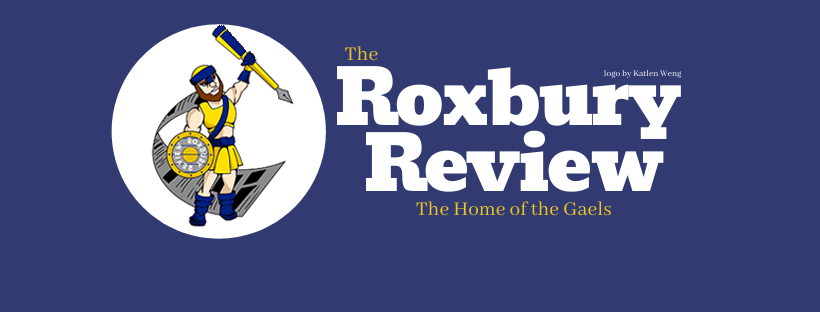South Asian Representation in Hollywood?



Representation? Such a broad term but something that is very much needed. Everyone wants to see themselves represented but that’s not normally the case. Especially in Hollywood. Although they have gotten better with inclusivity doesn’t mean they are including everyone. One ethnic group that has been noticed to have less representation is most definitely South Asians or as they call themselves Desi’s. Older generations deserve to see this, but as newer generations grow up, it would most definitely benefit them to see them represented on the big screen of Hollywood.
The most recent representation we have seen is Kate Sharma from Bridgerton. Kate Sharma played by Simone Ashley has become a great part of representation for Desi girls. Not only is the actor Tamil Indian but the character is known for her family’s backstory of being from India. Not only are girls seeing someone who looks just like them on screen but they’re also seeing cultural things done. Such as Chai being served, Kate wearing jhumkas(Indian earrings), and a haldi ceremony done before her sister’s wedding. Not only are they including diverse characters but they are showing their cultures properly.
On the topic of not showing cultures correctly Hollywood and lots of shows do this a lot. South Asians are always stereotyped. They are the smart ones, who have very thick accents that many don’t talk in. In The Revealers article, they talk about how badly Desi culture was represented back in the 90-2000s. In the show The Simpsons the famous Apu is one of the bad representations of culture. “Kwik-E-Mart, a convenience store owned by Apu Nahasapeemapetilon, an Indian American. Apu was an over-the-top Indian caricature, voiced by Hank Azaria, who spoke in a thick accent and was known for the way he bid his customers goodbye by saying, “Thank you, come again.” This type of brown-voice performance, media scholar Shilpa Dave notes, is a part of the legacy of British colonialism that has been carried over to the United States and that accentuates stereotypes about South Asians.” There’s even a film made in 2017, called The Problem With Apu, a documentary exploring how Apu has perpetuated racism against South Asians. Another example can be, in the show Sex in the city, Seema Patel has many stereotypes. Such as her parents pushing her to get an arranged marriage which is something many Desis don’t experience anymore. True representation involves accurate representation.
You may ask, why is this such an important topic? Or even why the representation of Desi’s is important? In an interview with Angelina Riveros, “ This type of representation is important because everyone deserves to see that they’re worthy enough to be on a big screen.”Representation, overall, is just so important for everyone but also if you grew up never seeing anyone who looks like you on tv, you’re almost gonna feel unworthy and not good enough. In another interview with Zainab Riasat, “ I grew up with no representation in American tv so the younger generation deserves to see this.” She also stated, “There’s so many Desis living in America it’s only right that we get some type of representation.” The US population has 5.4 million South Asian people. With that many shouldn’t they get some type of representation? Even if it isn’t a lot there should be some. And with the representation, they get it should also be accurate culturally and not full of stereotypes.
One show with a good representation of Desi culture is Never Have I Ever starring Maitreyi Ramakrishnan. It’s like any other basic teenage high school show. Drama, boys, bad grades, and popularity. But it also adds the layers of her grappling and balancing her Indian-American identity as well. It also highlights the many struggles many desi kids face. “ A common problem first-generation immigrants face as they grow into their own is an identity crisis… this is hardly ever addressed in teen shows effectively.” Although the show has its flaws in it too, it shows so many beautiful aspects of desi culture and highlights south Indian culture along with northern culture. “how South Asians also have a wide-ranging look instead of the one-tone depiction that is common in pop culture.” This show highlights Desi women of all colors light and dark.
Another big thing is when South Asian representation is done lots of people get upset by it. In the new Velma show starring Mindy Kaling as Velma. Many got upset as to how they made Velma South Asian and she isn’t the same as the original one. Lots of people came after her saying “ so not Velma…” Just because her skin tone changed doesn’t mean she’s not the same Velma. “If people freak out about that, I don’t care…Nobody ever complained about a talking dog solving mysteries so I don’t think they’ll be upset over a brown Velma.” Kaling also stated that what doesn’t make Velma brown,she’s just like us in so many ways “smart, can never find her glasses, skeptical, hardworking”.
Overall, South Asian or Desi representation is something that isn’t talked about enough. It’s something that more Desi’s should have grown up with but since we can’t fix the past why not fix the future? Let’s bring this representation onto the spectrum and make it more well-known.
https://therevealer.org/changing-stereotypes-of-south-asians-on-screen/
https://people.com/tv/mindy-kaling-reacts-to-south-asian-velma-backlash/
https://www.hollywoodinsider.com/never-have-i-ever-review-indian/
https://www.cinemablend.com/movies/great-south-asian-characters-in-recent-movies-and-television

Karishma Rampersad is an ambitious future immigration lawyer and has aspirations to go to Harvard Law School. Currently, Karishma is a junior at...
